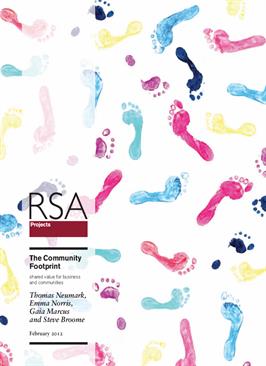Businesses have the capacity to bring people together and promote social interaction within communities. They can also benefit from these communities. By undertaking community impact assessments and producing action plans jointly with local people, businesses can significantly improve their impact on the surrounding community, creating new spaces for social and participatory networks to grow. We call this impact the community footprint.
A wealth of social interaction takes place on business premises. In research conducted with our project partner, B&Q, we found that in one B&Q store alone, four in ten customers had had some interaction with other customers while they were there. However, its potential benefits to communities and businesses alike are largely untapped. Competing operational priorities and disjointed government policies make it harder for businesses to evaluate or promote a more community-driven way of working.
Measuring a company’s impact and developing a response plan through the community footprint model, jointly assessed by business and community, is a way forward. By expanding their social impact – creating a better, shared experience of the company and its services, building stronger community links and providing a space for local networks to thrive – businesses will benefit from improved reputation, trust and loyalty from customers and increased access to ideas for products and services the community needs and wants. Government encouragement and support could further incentivise participation.
This report examines the key themes businesses need to consider in order to understand their community footprint and how they can build on it to become a community hub and/or develop greater shared value with customers and the community.
Our research has led to the following recommendations:
-
The government could support and encourage businesses and communities to jointly assess the community footprint of major businesses and co-produce action plans to promote social and economic goals.
-
The government could also support the growth of stakeholder partnerships through small pots of funding.
-
Businesses could do more work to understand the level of social interaction they currently support and identify ways in which this can be built upon.
pdf 2.2 MB
Contributors





Be the first to write a comment
Comments
Please login to post a comment or reply
Don't have an account? Click here to register.